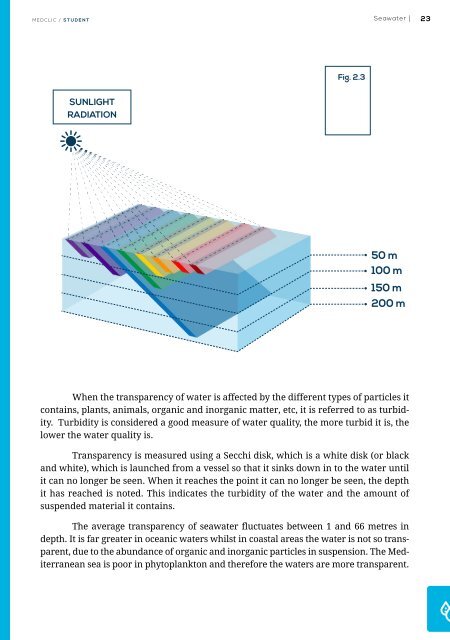u2_web_seawater
You also want an ePaper? Increase the reach of your titles
YUMPU automatically turns print PDFs into web optimized ePapers that Google loves.
MEDCLIC / STUDENT<br />
Seawater |<br />
23<br />
Fig. 2.3<br />
SUNLIGHT<br />
RADIATION<br />
50 m<br />
100 m<br />
150 m<br />
200 m<br />
When the transparency of water is affected by the different types of particles it<br />
contains, plants, animals, organic and inorganic matter, etc, it is referred to as turbidity.<br />
Turbidity is considered a good measure of water quality, the more turbid it is, the<br />
lower the water quality is.<br />
Transparency is measured using a Secchi disk, which is a white disk (or black<br />
and white), which is launched from a vessel so that it sinks down in to the water until<br />
it can no longer be seen. When it reaches the point it can no longer be seen, the depth<br />
it has reached is noted. This indicates the turbidity of the water and the amount of<br />
suspended material it contains.<br />
The average transparency of <strong>seawater</strong> fluctuates between 1 and 66 metres in<br />
depth. It is far greater in oceanic waters whilst in coastal areas the water is not so transparent,<br />
due to the abundance of organic and inorganic particles in suspension. The Mediterranean<br />
sea is poor in phytoplankton and therefore the waters are more transparent.




